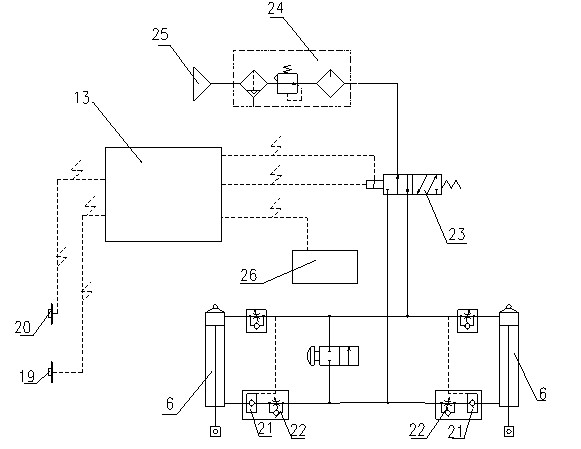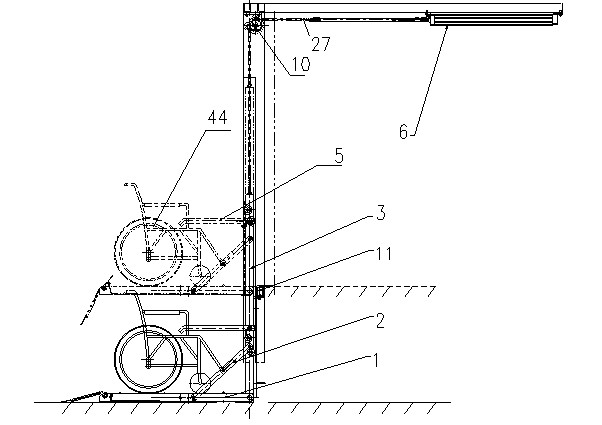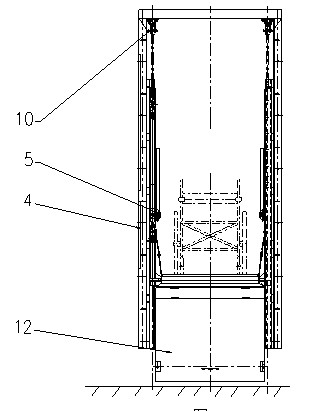Barrier-free folding chain elevating platform
A technology of folding and lifting platform, which is applied in the field of lifting platform, can solve the problems of inconvenient maintenance, unreasonable design and high cost, and achieve the effect of saving space, simple structure and low cost
- Summary
- Abstract
- Description
- Claims
- Application Information
AI Technical Summary
Problems solved by technology
Method used
Image
Examples
Embodiment Construction
[0037] The present invention will be further described below in conjunction with the accompanying drawings and embodiments.
[0038] like Figure 1-15 As shown, a barrier-free folding chain lifting platform includes a door frame guide rail 4 fixed to the end surface of the corresponding wall of the vehicle or building. The door frame guide rail 4 is provided with a pull rod 3 that moves up and down along it, and the upper end of the pull rod 3 is connected to the lifting mechanism. , the lower end of the pull rod 3 is connected with the foldable pedal device, the pull rod 3 is provided with a foldable handrail device, and the lifting mechanism is connected with the electric control mechanism 13. Cylinder 6 in the lifting mechanism of the present invention is fixed on the ceiling where the rising height is, and other devices are all arranged on the door frame guide rail 4, and the door frame guide rail 4 is fixed to the vehicle or the corresponding wall end face of the building...
PUM
 Login to View More
Login to View More Abstract
Description
Claims
Application Information
 Login to View More
Login to View More - R&D
- Intellectual Property
- Life Sciences
- Materials
- Tech Scout
- Unparalleled Data Quality
- Higher Quality Content
- 60% Fewer Hallucinations
Browse by: Latest US Patents, China's latest patents, Technical Efficacy Thesaurus, Application Domain, Technology Topic, Popular Technical Reports.
© 2025 PatSnap. All rights reserved.Legal|Privacy policy|Modern Slavery Act Transparency Statement|Sitemap|About US| Contact US: help@patsnap.com



